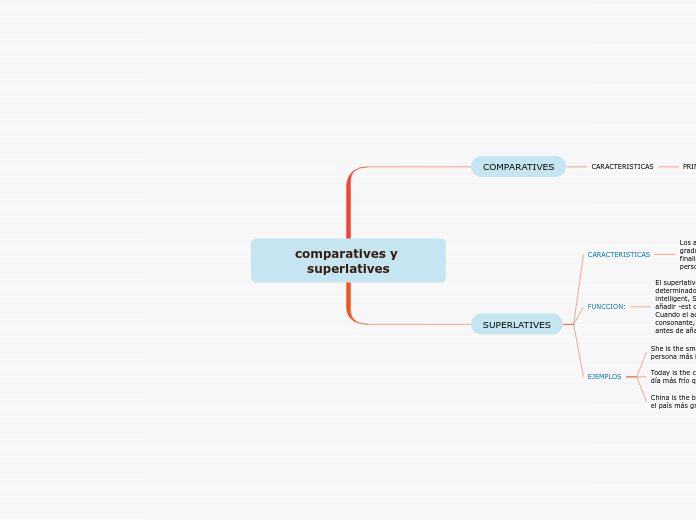von Maria Hernandez Vor 4 Jahren
358
comparatives y superlatives
Los adjetivos superlativos se utilizan para indicar el grado máximo de una característica en una persona, objeto o ambiente. Siempre van precedidos por un artículo determinado como "

von Maria Hernandez Vor 4 Jahren
358

Mehr dazu

To name your story, you have to think about the overall message and what you want your audience to understand from the story. Also, make it relevant and easy to remember.
The middle of the story is where you add layers of complications that will lead to the end. Reveal more about the character's journey. Did their personality go through changes? How did they overcome the challenges? And as you build up the story’s central conflict, make it more personal to that character. Also, from the middle act, you have to lead into the final act.
There wouldn't be any tension and excitement in your story if there weren't any obstacles in your character's way.
Your character(s) need(s) motivation in order to solve the challenge(s).
Each story has a main character and that character usually needs to solve a problem or challenge. The character's challenge is the one that creates tension throughout the story.
In most stories, there are 3 challenges. The number 3 is a mystical number symbolizing completeness. Try to come up with interesting challenges with which your character needs to struggle.
See a few examples below:
Challenges
In the beginning of the story (or the exposition), you will need to introduce the setting and characters. You might also want to introduce the main conflict. This part of the story is important because it gives the reader necessary background information and maybe even a first insight into a character’s personality.
Characters are essential to a good story. Usually, the protagonist(s) is/are the most affected by the plot. Introduce a character by focusing on their actions, interests, and occupation, as the physical appearance doesn't make a difference in most cases.
Type in the name of your character.
EJEMPLOS:
Add other qualities/attributes of the character.
Long (largo) longer the longest
Adjetivo Comparativo Superlativo
SU FUNCCION : se usa en inglés para comparar diferencias entre los dos objetos a los que modifica (larger, smaller, faster, higher). Se emplea en oraciones donde comparamos dos nombres.
Which traits best describe the character's personality? Choose more if necessary:
Es una palabra que indica una característica de un sustantivo, como “a tall building” (un edificio alto). Cuando queremos comparar este sustantivo con otros sustantivos, necesitamos usar comparativos y superlativos.
Choose the type of your chacter: